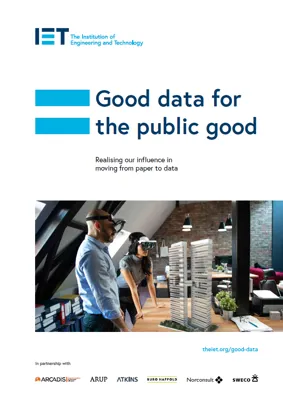Good data for the public good
This IET report looks at the transition of the built environment from document-centric to data-centric. Written for technology providers and users within the built environment’s engineering and design community, it also considers the changing focus around project delivery; moving away from short-term towards whole-life value propositions.
To deliver operational benefits for owners, operators, occupants and users of built assets throughout their whole life, we need data that’s perpetually accessible while also being securely managed. Simultaneously, to deliver wider social, economic and environmental benefits, we also need data to be open. This doesn’t mean free; the openness of data is about its interoperability and ease of distribution.
These aspirations inevitably challenge existing industry practices and some entrenched commercial positions. As industry practice has begun to shift from document sharing to data sharing, the role of established technology providers may also need to change. Today’s architecture, engineering and construction (AEC) software providers will need to review how they might best capitalise on the rapidly changing nature of built environment data in the 21st century.
You may also be interested in
AUTODESK thoughts on EMEA Engineering Executive Council report: good data for the public good
Autodesk shares its thoughts in response to the EMEA Engineering Executive Council’s paper. In the response, Nicolas Mangon, vice president of AEC Business Strategy and Marketing for Autodesk, acknowledges the insight the IET report provides on what the industry is expecting of AEC software providers and how Autodesk strives to be a catalyst and partner for their customers during the convergence of industry processes, proactively supporting them in their digital transformation. It also recognizes the industry’s longstanding issues with interoperability and collaboration and touches on Autodesk’s present and future investments in design, construction and operational workflows to allow its customers to better maximize the value of their data to improve decision making processes.

